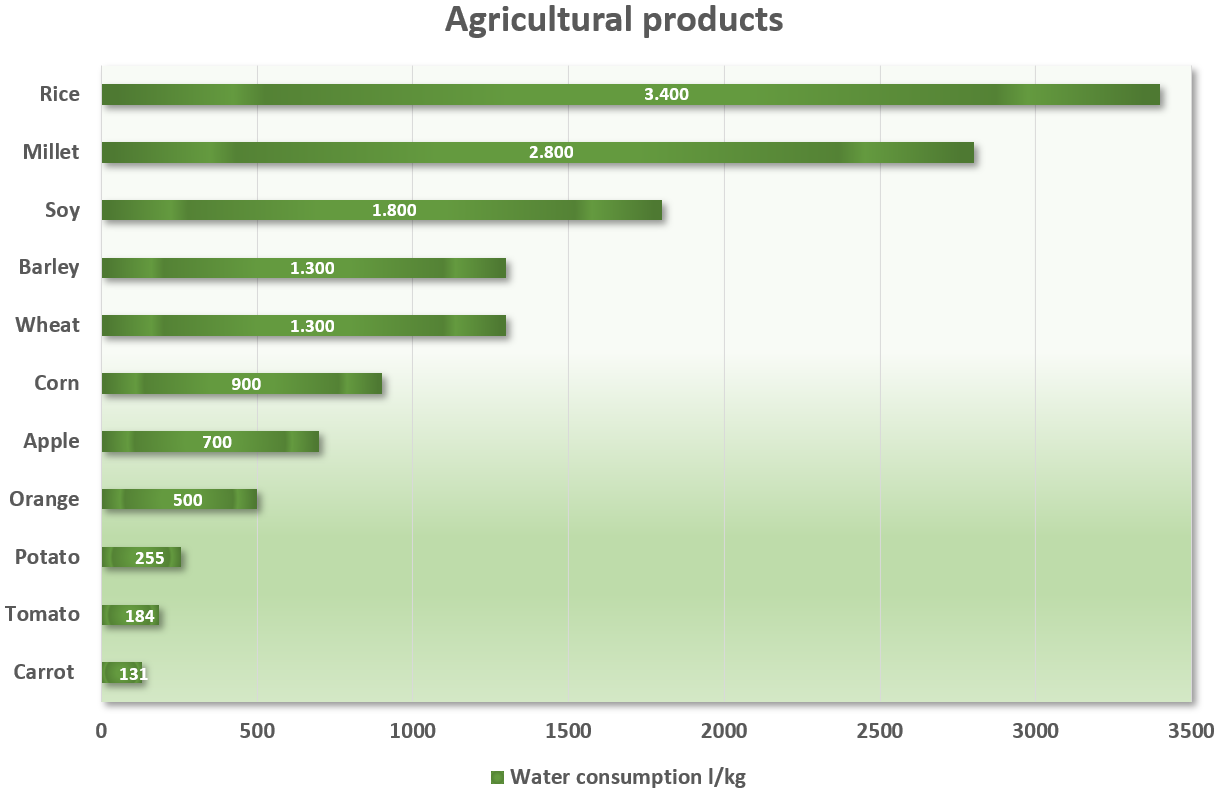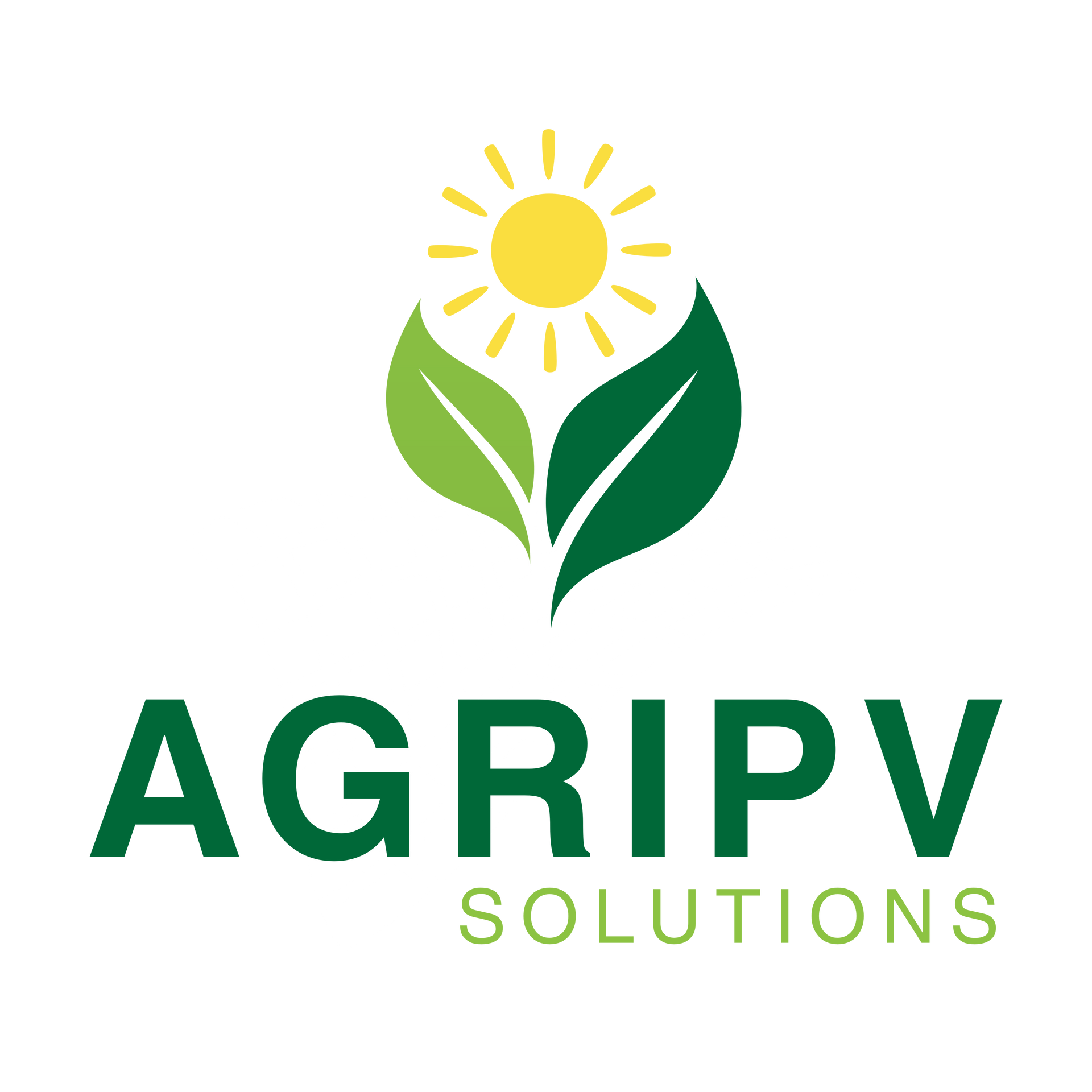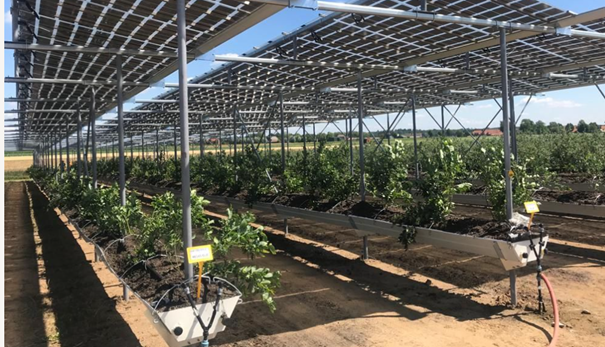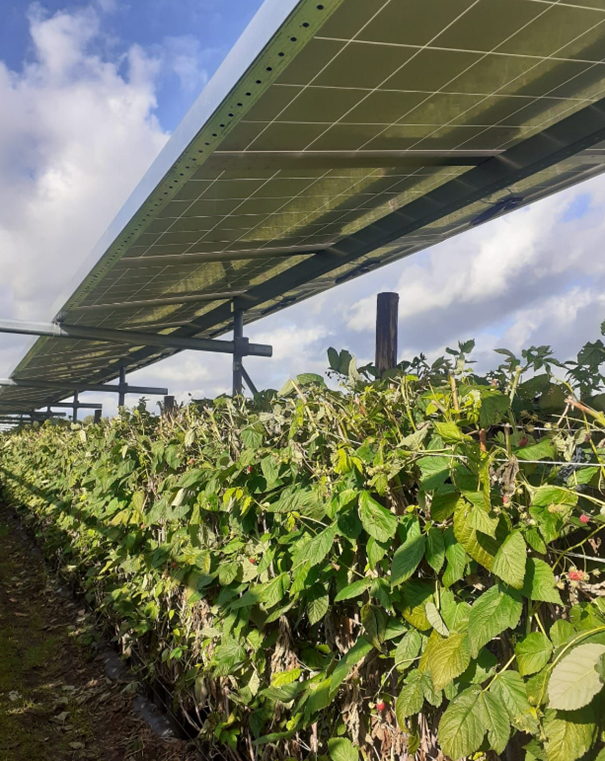Here you can find out everything you need to know about plant cultures
The right AgriPV system for your crops, the amount of light required for each type of plant
Which culture fits which substructure?
| Cultural | East-West uprising | South orientation | Tracker-System | Endless-System |
|---|---|---|---|---|
| Fruits | x | x | ||
| Berrys | x | x | ||
| Wine | x | x | ||
| Asparagus | x | x | ||
| Grain | x | x | ||
| More | x | x | ||
| Potato | x | x | ||
| Greenland | x | x |
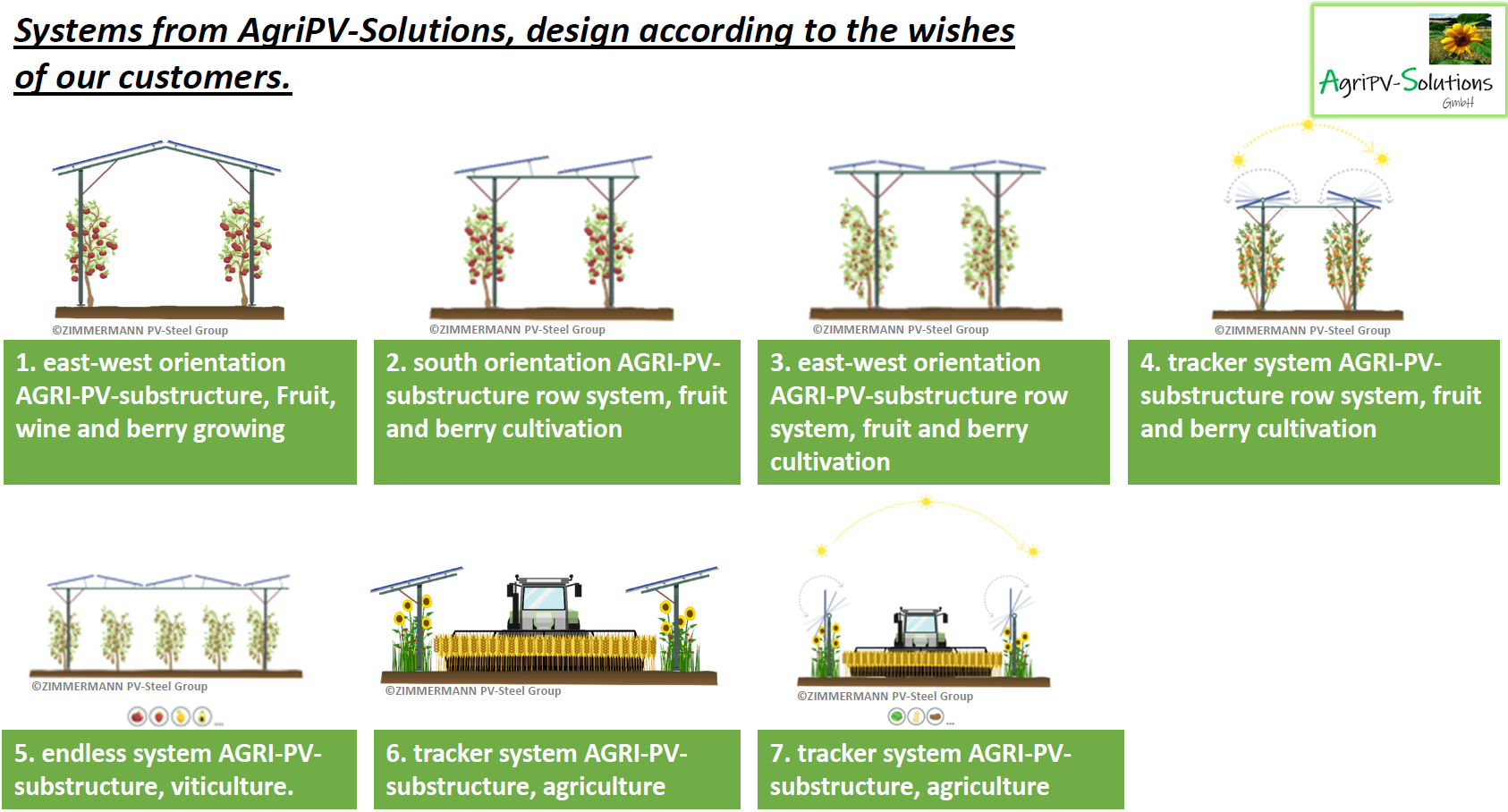

Necessary amount of light per plant species
It is often assumed by farmers and fruit growers that PV modules would greatly reduce the amount of light required by the different crops. However, the enormous differentiation in terms of the required amount of light depending on the species and breed was hardly taken into account.
We have made an approximate subdivision of the plant species for you on the left.
Shade plants need little sun or those that hardly get enough light, e.g. field crops such as potatoes, beans, turnips etc., between little and medium sun need e.g. onions, cucumbers, zucchini etc., medium sun require rapeseed, oats, carrots , cabbage, young citrus plants, etc., between medium and strong sun especially need young plants and berries. Wheat, corn, sunflowers, pumpkins, etc. should get lots of sun.
In view of global warming, fewer and fewer crops can tolerate absolute solar radiation, which is why they must be preserved. Young plants are also extremely sensitive to excessive UV radiation and develop more promisingly when shaded.
Light simulation - Crop shading - Conclusions.
- Blueberries are the most suitable crop for shading based on the available data and have an increased yield with the static east-west elevation analyzed.
- Strawberries have a consistent yield with the static east-west elevation analyzed based on the present data.
- Raspberries show a decrease in yield with the analyzed static east-west elevation based on the available data.
- In this light simulation, PV modules were selected which resulted in very high degrees of shading.
- Due to the continuous development of the technology, semi-transparent modules (transparency of 30 % - 50 %) can now be installed, which means that raspberries can also be optimally served with regard to shading.
- However, the success of cultivation depends not only on the light factor, but many other parameters must be taken into account.
Source: © Fraunhofer ISE, Status: 08.12.2022
We are happy to support you with our know-how and to develop and implement an optimal conceptual design for your culture.
For further information, please click here:
AgriPV plants for efficient water management
In addition to planting food and producing green electricity, rainwater harvesting and storage using gutters plus catch basins is easily possible with little additional effort.
Even in the states with the lowest rainfall (almost all eastern states), rainfall would be largely sufficient to meet the water needs of most crops. (Investigation in abundant studies)
Water requirements are primarily tied to environmental conditions (precipitation, evapotranspiration, etc.), crop types, and soil conditions.
The bar chart on the right illustrates the enormous differences between the various agricultural products in terms of water consumption. (l/kg)
While rice, millet and soybeans, for example, require an extremely large amount of water, carrots, tomatoes and potatoes can manage very well with little water.
Fruit cultivation requires relatively little water, approx. 700 - 900 l/kg depending on the variety (e.g. apples, bananas, etc.).
